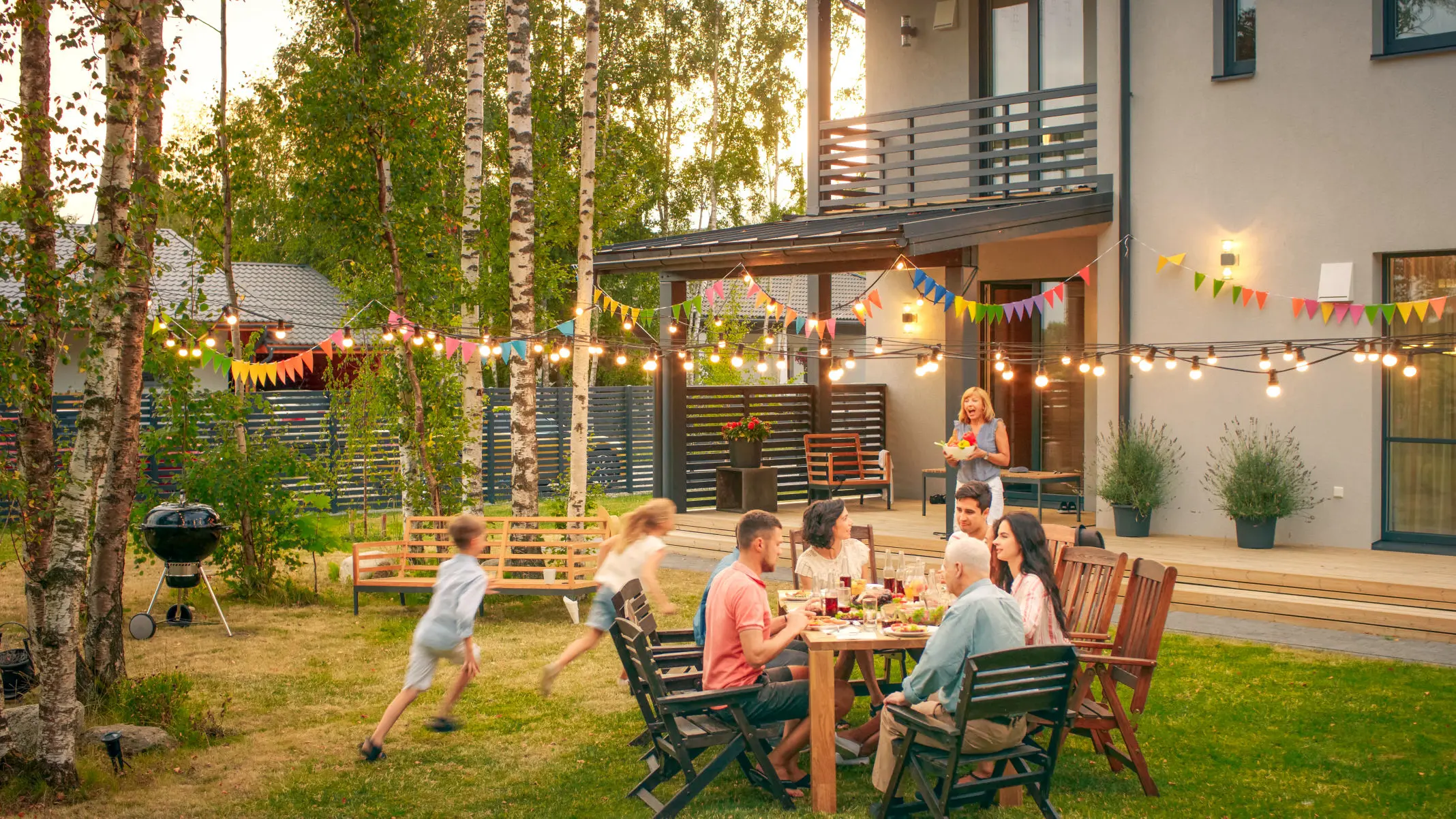


In Heppner, your $230,000 salary provides genuine financial freedom. With a cost of living index at 89.3 (11% below national average), your dollars stretch far beyond metropolitan equivalents—often 40-50% further than in Portland or Seattle. Instead of losing income to housing, private schools, and hidden city costs, you’ll experience the rare balance of living well while building wealth.
Heppner’s median home price is $185,000, meaning you could buy outright within a year of earnings. A 4-bedroom, 3,000 sq. ft. home on acreage might cost just $350,000—about $1,750/month, or only 9% of your income. Compare this to Portland ($550,000 median), Seattle ($850,000), or San Francisco ($2.5 million), where physicians spend 40–50% of income on housing. Here, you’ll spend less than 10%, freeing thousands monthly for investments and retirement planning.
Groceries cost slightly less (about 5% below national average), but the real savings come from lifestyle differences. You’ll buy beef directly from ranchers at $4/lb, harvest game yourself, and enjoy homegrown produce gifted by patients. Dining out averages $12–15 per meal instead of $30–40 in cities. A family grocery budget of $600–800 stretches further than $1,200–1,500 in metro settings.
With a seven-minute commute, you’ll spend just $150/month on fuel versus $400–500 for city peers. No tolls, no parking fees, and lower insurance rates mean annual savings of $8,000–12,000. Many families even manage with one vehicle, eliminating $500–800 in monthly payments most urban physicians consider unavoidable.
As a hospital-employed physician, your insurance premiums are subsidized. Local dental, vision, and prescription costs are lower than national averages, and the absence of concierge care pressures saves $2,000–5,000 annually. Collegial networks ensure excellent care without the defensive medicine costs seen in cities.
Childcare costs $400–600/month through local providers versus $1,500–2,500 in cities. Excellent public schools eliminate private tuition costs of $15,000–40,000 annually. Even private school in Pendleton is just $8,500. Youth programs like 4-H, FFA, and school sports cost nominal fees compared to $10,000+ urban travel teams.
Though Oregon’s income tax reaches 9.9%, the lack of sales tax, lower property taxes, and minimal hidden costs make your effective rate about 7.5%. Unlike urban physicians, you’ll avoid city taxes and assessment districts, further protecting your income.
On $230,000 in Heppner, your monthly budget may look like this: $1,750 housing, $800 food, $300 utilities, $200 transportation, $500 insurance—leaving ~$10,000/month for savings and discretionary spending. To match this lifestyle, you’d need: $340,000 in Portland, $385,000 in Seattle, $520,000 in San Francisco. In reality, those salaries are rare, leaving urban peers with less disposable income despite higher gross pay.
Heppner’s cost structure lets you accumulate wealth rather than just survive. You’ll max retirement accounts, fund 529 plans, invest in real estate, and still have room for passion projects. Owning a 20-acre ranch becomes achievable in five years. Early retirement at 55 shifts from dream to realistic plan. Your children graduate debt-free, your home is paid off within a decade, and you achieve the financial security urban peers often never reach. This isn’t about living cheaply—it’s about living wisely where your salary translates into lasting wealth and freedom.
In Heppner, your $230,000 salary places you at the top of the real estate market. A $400,000 home requires just $2,000/month in mortgage payments—only 10% of your income—while Portland peers spend 30–40% on cramped suburban houses. Here, your income translates into professional-level housing that truly reflects your success.
Heppner’s market is small but offers remarkable value. Historic Victorians with original woodwork, 12-foot ceilings, and wraparound porches list for $250,000–350,000. Ranch-style homes on 1–3 acre lots sell for $180,000–250,000, perfect for modern updates. Occasionally, estate properties with 20–40 acres, barns, and water rights appear for $400,000–600,000, providing turnkey rural living.
With limited inventory, many physicians choose to build. Local builders like Joe Kumar, Grieb Construction, and Murray’s Custom Homes deliver custom residences for $125–150/sq. ft. vs. $300–400 in Portland. A 4,000 sq. ft. home with gourmet kitchen, mountain-view suite, theater, and workshop costs about $600,000—just 15.6% of your income. In metro markets, that same build would demand $1.6–2 million.
Heppner offers spectacular building sites at a fraction of big-city costs. South slopes above town provide panoramic views and solar efficiency. Creekside parcels along Willow Creek offer water rights and riparian beauty. Benchlands east of town deliver 360° vistas with quick hospital access. Here, your dream setting is within easy reach.
Local builders understand physician schedules, offering flexible planning and video updates. Contractors coordinate seamlessly in this close-knit community, inspectors provide guidance instead of red tape, and local banks streamline construction-to-mortgage loans. Building in Heppner is as straightforward as it is rewarding.
While building, 3-bedroom rentals are available for $800–1,200/month—less than a one-bedroom apartment in Portland. The Health District may assist with temporary housing, including district-owned homes. Furnished month-to-month rentals and nearby options in Hermiston or Pendleton provide flexibility during your transition.
Surrounding towns expand your choices. Ione offers ultra-affordable homes, Lexington provides small-town charm just minutes from Heppner, while Hermiston and Pendleton feature subdivisions, historic homes, and golf course communities for those preferring bigger markets.
Your financial strength enables real estate investments unavailable in cities. Rental homes at $100,000–150,000 generate income while addressing shortages. Agricultural land offers long-term appreciation plus lease income from wheat or cattle. Some physicians even develop subdivisions, blending community impact with financial returns.
Whether you choose a Victorian charmer, custom dream build, or ranch estate, Heppner housing transforms your professional achievement into tangible rewards. While metro peers remain house-poor, you’ll own property that reflects success and supports the lifestyle you envisioned when choosing medicine—complete with acreage, guest spaces, and the freedom to build your future.



In Heppner, safety is defined not by locks and alarms but by relationships and trust. Here, doors remain unlocked, children’s bikes lie where they were dropped, and “crime controversies” often involve dogs tipping trash cans. This isn’t naïve—it’s the confident security of a place where everyone knows everyone, and accountability flows from community bonds rather than surveillance systems.
The numbers prove what feels almost impossible in urban settings: zero violent crimes in many years, property crime at 75% below the national average, and most “burglaries” involving unlocked cars with valuables in plain sight. The Morrow County Sheriff’s Office handles calls more often about livestock on highways or fence line disputes than serious crime—reflecting a healthy, functioning community.
Deputies live here, know residents by name, and show up at school events and community gatherings. Response times average under 10 minutes, and programs like coffee meetups, youth mentorship, and elder check-ins reinforce prevention over enforcement. Policing here is partnership, not opposition.
In Heppner, children ride bikes freely, teens close shops without fear, and elderly residents walk downtown independently. The concept of “bad neighborhoods” doesn’t exist—income doesn’t dictate safety. Even the high school parking lot is filled with unlocked vehicles, many with keys inside.
Pioneer Memorial Hospital maintains comprehensive ER capabilities without the violence common in urban facilities. Life Flight ensures rapid trauma transfers, while volunteer EMS and fire services deliver sub-8-minute response times. Healthcare workers here practice without the daily anxiety of workplace violence.
While crime is rare, residents respect nature. Flood management systems trace back to the 1903 disaster, wildfire risk is reduced by proactive fuels work, and winter storms are met with stocked pantries, generators, and neighbor check-ins. These challenges strengthen cohesion rather than creating danger.
Commutes are short, calm, and safe—seven minutes, two stop signs, no traffic lights. The biggest hazards are deer crossings at dusk. Highways are well-maintained by ODOT, and school buses safely transport children from remote ranches. Unlike cities, road rage and congestion don’t exist here.
Safety here creates freedom—leaving windows open for breezes, teenagers jogging at night without tracking apps, and garage sales using honor system cash boxes. Your spouse walks the dog at dawn without pepper spray, and your children sell fundraisers door-to-door without fear. After years of urban hypervigilance, you’ll rediscover peace of mind, trust, and community confidence that let you focus on living rather than managing risk.
